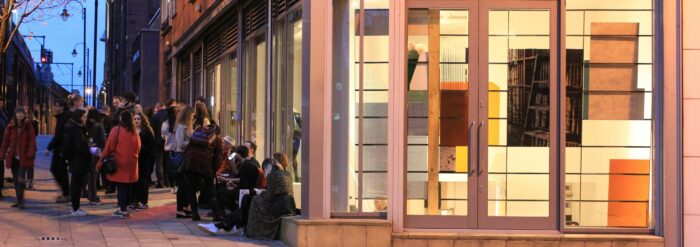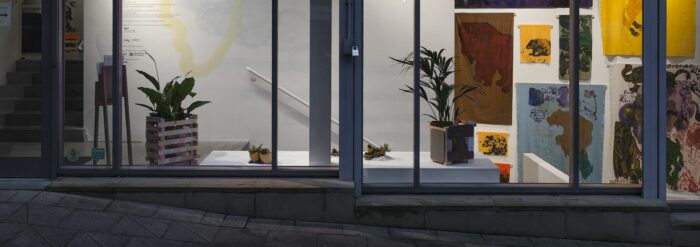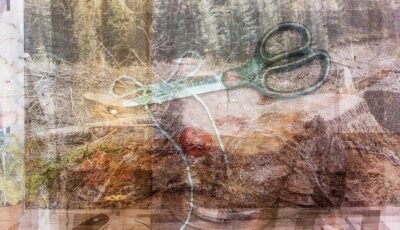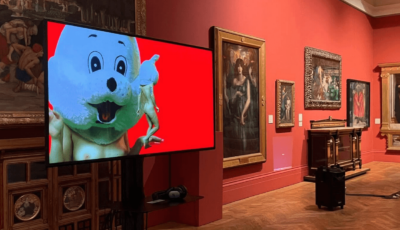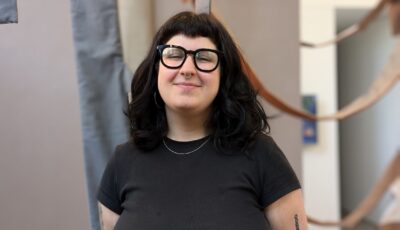
Spotlight: Artists and Sustainability – Hilary Jack
Posted on 15 March 2023
This month we’ve invited artist and Castlefield Gallery Associate Hilary Jack to contribute to our ongoing series Spotlight – Artists and Sustainability, where we ask artists to share short responses about their work and how it might relate to climate change. One of Hilary Jack’s architectural models for Unsettled Ground, an outdoor, citywide art installation commissioned by GMCA in 2022 for A Modest Show, is currently on display outside of Castlefield Gallery. Unsettled Ground references the architectural decline and rise of the two cities of Salford and Manchester, with its architectural models acting as both a public art work and as functioning nesting boxes for bird and insect populations negatively impacted by the fast pace of regeneration in the city.
In what ways do you feel your work might relate to issues of climate crisis and sustainability, in the content of the work, its narrative, conceptually or theoretically. How might it speak to or challenge public discourse?
I work across all media in research-based projects. My work often references a particular location and takes the form of publicly sited work, sculptural interventions and installations. The work has an activist element and comments on the politics of place, socio- political and environmental issues. My work goes hand in hand with my own activism as a life-long campaigner for environmental issues and, since 2018, an active member of Extinction Rebellion.
My most recent commission Deluge, for Meadow Arts takes the form of a perpetually scrolling LED newsreel, capturing ancient mythical and biblical flood narratives from various cultures, alongside news announcements in 2022, of record breaking, devastating floods across the world, causing the first climate crisis refugees. The work highlights the very real effects of rising sea levels and is sited on Story Island at The Hive in Worcester, a city subject to severe flooding. The location is landscaped to act as a flood defence when waters from the River Severn rise to dangerous levels.
With regards the materials, processes and techniques you use to produce your work, are there any practical decisions you make with regards climate change and sustainability
I acknowledge that it’s hard to step outside of the pressures and systems that make up our modern world.
However – I try to make ethical decisions about my art practice. For example, I make less work (!) and I try to waste as little as possible. Wherever possible I use found and discarded materials. When fabricating a large scale art work I try to ensure the work will either disappear or breakdown of its own accord. For example, In Memoriam, a 75 metre drawing of a crop circle on turf, simply disappeared when left to its own devices. When that’s not possible, with No Borders for example, a 9x 8 metre neon, I try to ensure that the work is fabricated well and as low energy as possible, and will be exhibited multiple times or “recycled” in some way.
In general, how do you feel galleries, art spaces, artworks and artists, might be able to contribute, what if any role do you feel they can play in a progressive conversation.
While conversations on the subject of climate crisis and sustainability are important, I think it’s time for urgent action rather than more talking.
Galleries and arts organisations must make meaningful Green Pledges to demonstrate their own green credentials and commitments. Galleries, individual artists, studios and curators need to look at unusual and radical ways to present exhibitions using green, low energy materials where possible and reusing materials to reduce the excessive amount of waste produced by exhibitions and studios.
Organisations are under scrutiny, and pressure to examine how they operate, and reconsider who is sponsoring their programmes and financing their organisations. We’ve seen protests by exhibiting artists and environmental groups like Just Stop Oil and XR at institutions and exhibitions sponsored by Shell, BP or the Sackler Trust which has forced change.
These are complex issues but a fairly simple action for all arts organisations, like changing to a “Green Bank” are possible options, and incredibly powerful actions. Barclays, for example, is one of the biggest funders of fossil fuel companies in the world, providing millions for oil and gas drilling in the Arctic, one of the most environmentally sensitive habitats on earth. Taking your money out of a bank that funds fossil fuels and acts in this way sends a strong message.
Are there any tips or advice, anything you have learnt you might want to share with other artists or our audiences
I heard a new word the other day – Catastra-fatigue –it’s appropriate for the times in which we live as each new crises fast eclipses the last in what appears to be an endless cycle. Exhausting as this is, we need to stop being a spectator to catastrophe and somehow find the energy to step up and act. Scientists have been telling us about climate crisis for over thirty years while oil and gas companies have spent billions burying this information with denial and delay while pocketing huge profits. We can see that those in power are failing us in many ways, but particularly with climate crisis, which is linked to so many other global issues. As individuals we need to step up to make change.
Being an artist is, I believe, a political choice and Art has the power to make change. So, let’s lend our support to environmental groups, get involved and make our voices heard. We are more powerful than we think.
